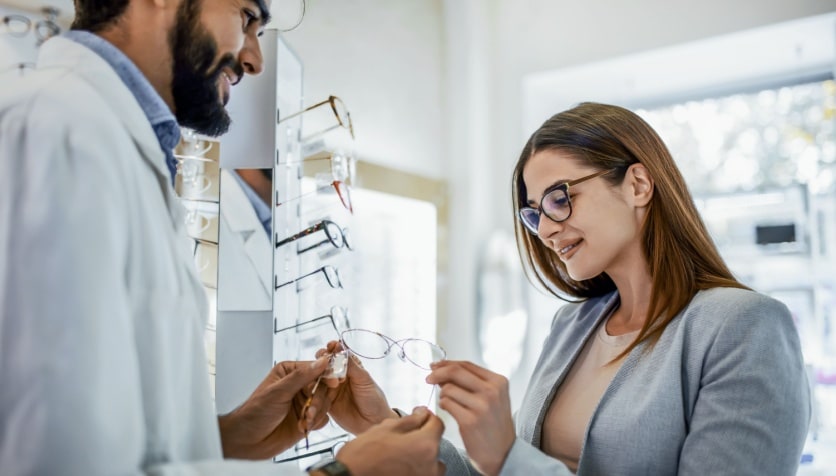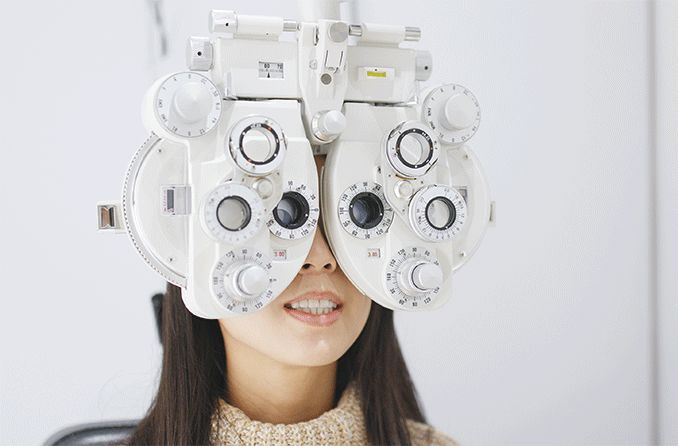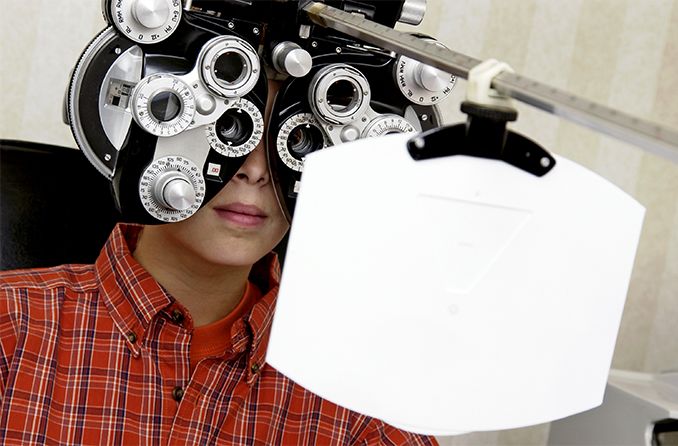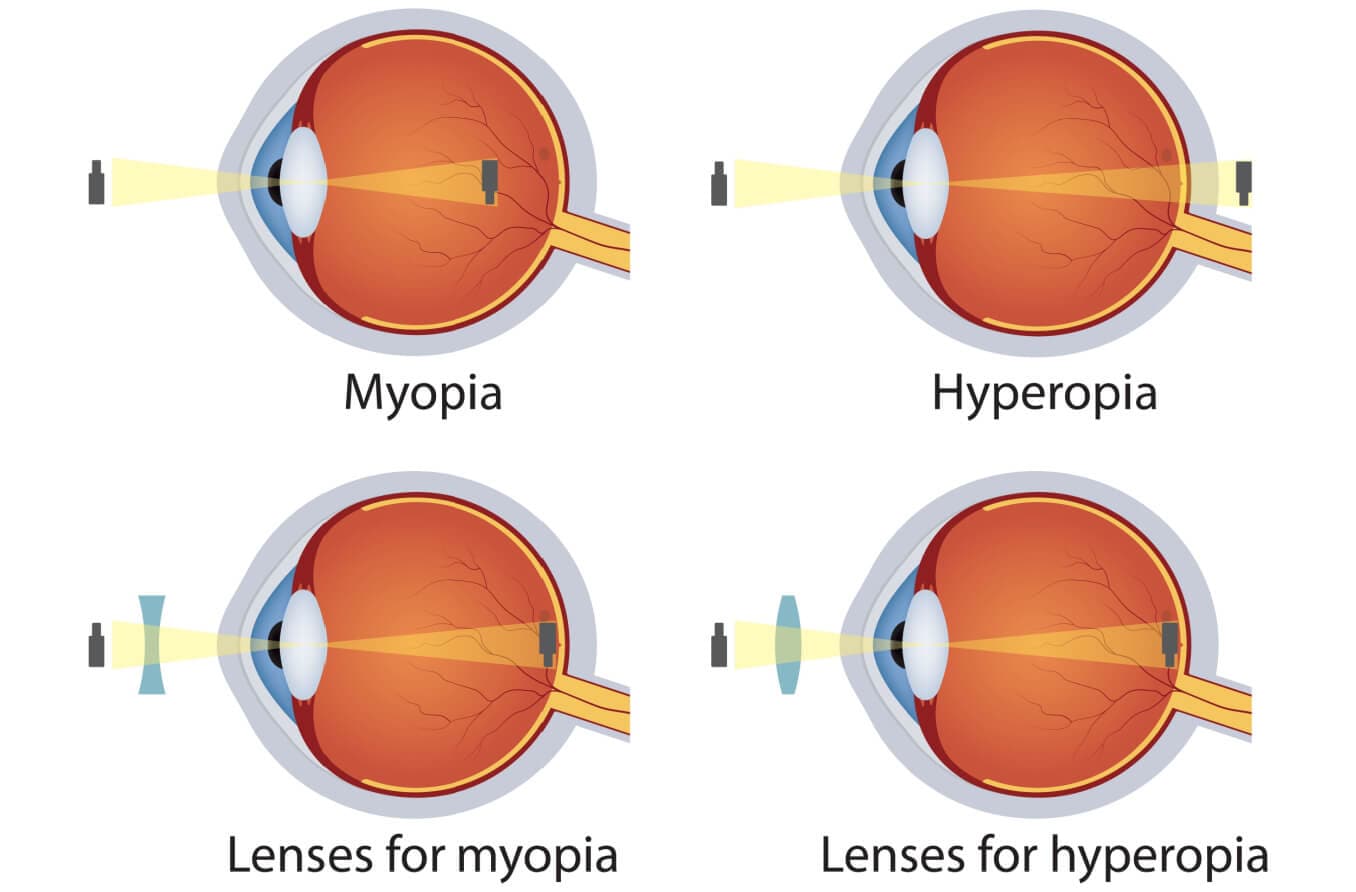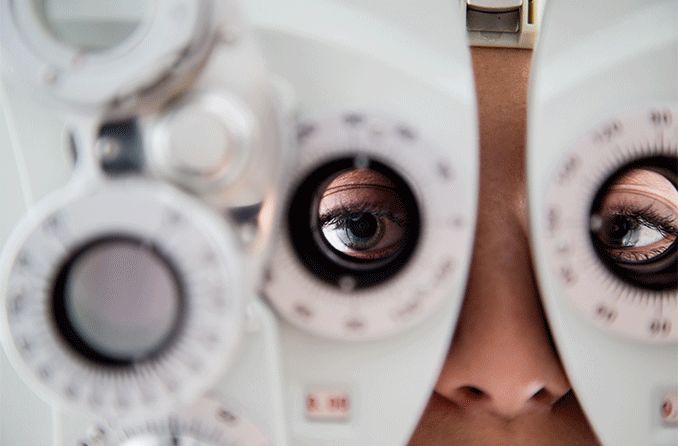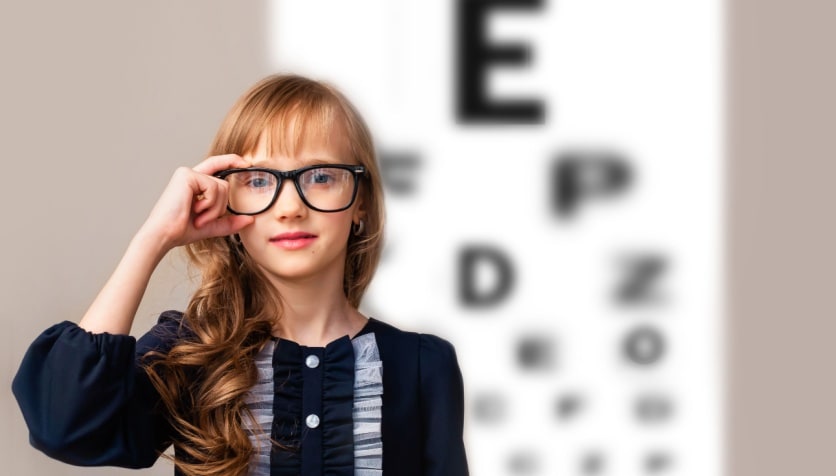Nearsightedness (myopia) is corrected with lenses called “minus power lenses.” They are concave-shaped and help the eyes focus light properly. Myopia causes a person to see distant objects as blurry. Prescription eyeglasses or contact lenses can usually correct this blurry distant vision.
The focusing power of an eye with myopia is stronger than a normal eye. It brings light to a focal point in front of the retina, instead of on the retina.
A lens used to correct myopia works by reducing the focusing power of the eye. This is why it is called a "minus power lens" (or "minus lens").

Minus lenses are concave in shape. In other words, they are thinnest at the center and thicker at the edge. This lens shape moves the focus of light from in front of the retina directly onto its surface. This shift corrects the blurry distance vision caused by nearsightedness.
The power of a lens that corrects myopia is measured in units called diopters (D). The lens powers on an eyeglass prescription for myopia always begin with a minus sign. The higher the power number of the lens, the more myopia it corrects.
For example, a -6.00 D lens corrects twice the amount of nearsightedness as a -3.00 D lens.
High-index lenses are typically recommended for correcting nearsightedness greater than -3.00 diopters. They are thinner and lighter than regular plastic lenses, so they are more attractive and comfortable.
Also, anti-reflective (AR) coating is highly recommended for lenses that correct nearsightedness. AR coating prevents distracting reflections in the lenses and improves vision and comfort.
Eyeglasses tend to be more well tolerated than contact lenses. They are usually the first line of myopia correction for this reason. But contact lenses are also successful in correcting myopia.
With either option, the most important factor is wearing the correct lens prescription. Regular eye exams are critical to ensure the myopia is not undercorrected.
For children with progressive myopia, standard eyeglasses and contact lenses may not be the best first choice. The standard prescription lenses used for myopia correction do not help to slow myopia progression.
In these cases, myopia control eyeglasses or myopia control contact lenses may be the better option. These specialized lenses are designed specifically to slow myopia progression. They are able to slow the elongation of the eyes, which is the most common cause of myopia progression.
To determine the best vision correction options for your needs, schedule an eye exam with an eye doctor near you.
